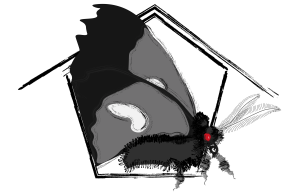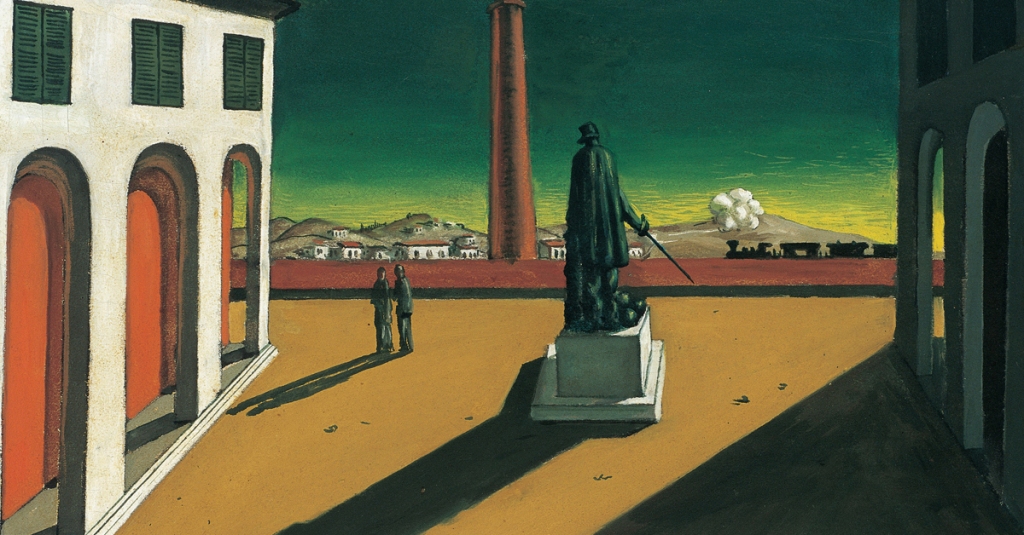How far do the landscapes of one’s childhood, as much as its emotional experiences, provide an inescapable background to all one’s imaginative writing? Certainly my own earliest memories are of Shanghai during the annual long summer of floods, when the streets of the city were two or three feet deep in a brown silt-laden water, and where the surrounding countryside, in the center of the flood-table of the Yangtze, was an almost continuous mirror of drowned paddy fields and irrigation canals stirring sluggishly in the hot sunlight. On reflection it seems to me that the image of an immense half-submerged city overgrown by tropical vegetation, which forms the centerpiece of The Drowned World, is in some way a fusion of my childhood memories of Shanghai and those of my last 10 years in London.
One of the subjects of the novel is the journey of return made by the principal characters from the 20th century back into the paradisal sun-filled world of a second Triassic age, and their gradually mounting awareness of the ambivalent motives propelling them into the emerging past. They realize that the uterine sea around them, the dark womb of the ocean mother, is as much the graveyard of their own individuality as it is the source of their lives, and perhaps their fears reflect my own uneasiness in reenacting the experiences of childhood and attempting to explore such dangerous ground.
Among the characteristic fauna of the Triassic age were the crocodiles and alligators, amphibian creatures at home in both the aquatic and terrestrial worlds, who symbolize for the hero of the novel the submerged dangers of his quest. Even now I can vividly remember the enormous ancient alligator housed in a narrow concrete pit, half-filled with cigarette packets and ice-cream cartons in the reptile house at the Shanghai Zoo, who seemed to have been jerked forward reluctantly, so many tens of millions of years into the 20th century.
In many respects this fusion of past and present experiences, and of such disparate elements as the modern office buildings of central London and an alligator in a Chinese zoo, resembles the mechanisms by which dreams are constructed, and perhaps the great value of fantasy as a literary form is its ability to bring together apparently unconnected and dissimilar ideas. To a large extent all fantasy serves this purpose, but I believe that speculative fantasy, as I prefer to call the more serious fringe of science fiction, is an especially potent method of using one’s imagination to construct a paradoxical universe where dream and reality become fused together, each retaining its own distinctive quality and yet in some way assuming the role of its opposite, and where by an undeniable logic black simultaneously becomes white.
Without in any way suggesting that the act of writing is a form of creative self-analysis, I feel that the writer of fantasy has a marked tendency to select images and ideas which directly reflect the internal landscapes of his mind, and the reader of fantasy must interpret them on this level, distinguishing between the manifest content, which may seem obscure, meaningless or nightmarish, and the latent content, the private vocabulary of symbols drawn by the narrative from the writer’s mind. The dream worlds, synthetic landscapes and plasticity of visual forms invented by the writer of fantasy are external equivalents of the inner world of the psyche, and because these symbols take their impetus from the most formative and confused periods of our lives they are often time-sculptures of terrifying ambiguity.
This zone I think of as “inner space”, the internal landscape of tomorrow that is a transmuted image of the past, and one of the most fruitful areas for the imaginative writer. It is particularly rich in visual symbols, and I feel that this type of speculative fantasy plays a role very similar to that of surrealism in the graphic arts. The painters de Chirico, Dali and Max Ernst, among others, are in a sense the iconographers of inner space, all during their most creative periods concerned with the discovery of images in which internal and external reality meet and fuse. Dali, regrettably, is now in total critical eclipse, but his paintings, with their soft watches and minatory luminous beaches, are of almost magical potency, suffused by that curious ambivalence that one can see elsewhere only on the serpentine faces in the paintings of Leonardo.
It is a curious thing that the landscapes of these painters, and of Dali in particular, are often referred to as dream-like, when in fact they must bear no resemblance to the vast majority of dreams, which in general take place within confined indoor settings, a cross between Kafka and Mrs Dale’s Diary, and where fantastic images, such as singing flowers or sonic sculpture, appear as infrequently as they do in reality. This false identification, and the awareness that the landscapes and themes are reflections of some interior reality within our minds, is a pointer to the importance of speculative fantasy in the century of Hiroshima and Cape Canaveral.
J. G. Ballard. “Time, Memory and Inner Space.” The Woman Journalist Magazine. 1963.


Leave a comment